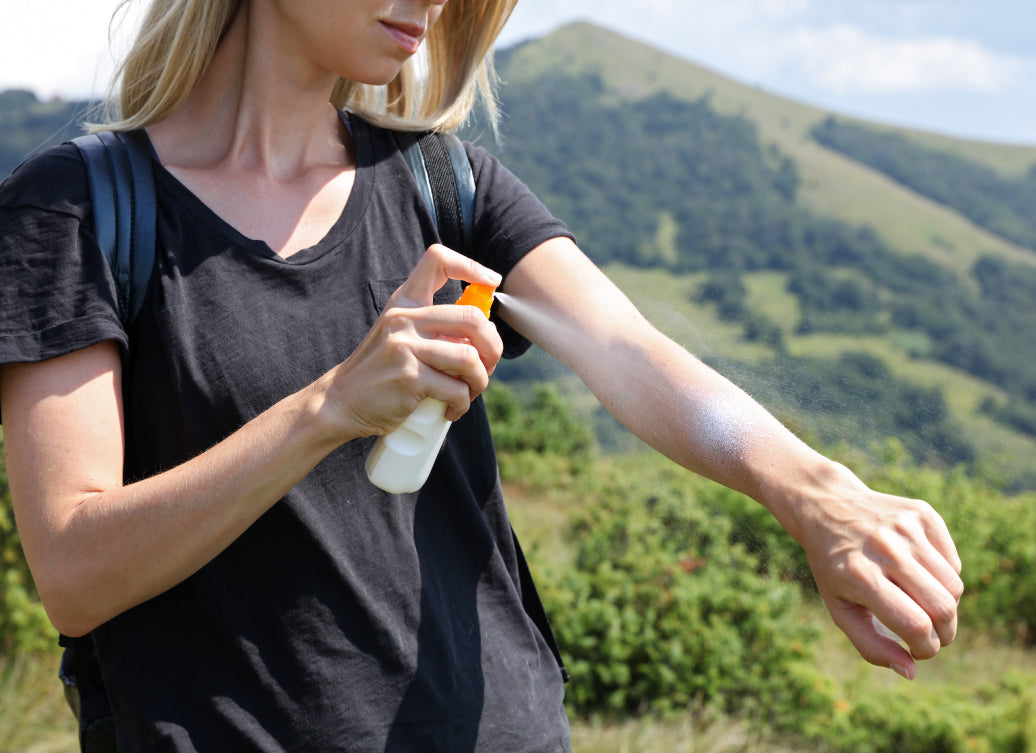As Polymorphic Light Eruption (aka PMLE) is a problem with sunlight, will a good sunscreen help? We take a look at how sunlight affects the skin and whether blocking it out can prevent or lessen the severity of a PMLE flare.
While it’s still not known exactly why PMLE happens to some people and not others, it is clear that the mechanism behind it is to do with the way the skin reacts to direct exposure to sunlight. In people prone to PMLE or other photosensitive conditions, the body overreacts to UV light, which leads to excessive inflammation, rashes or hives.
Symptoms of PMLE can vary from person to person, with some people only experiencing mild and temporary itchiness where sunlight has touched newly exposed skin, and others finding themselves severely affected by painful rashes all summer long. It can be hard to enjoy a summer holiday when wearing short sleeves and shorts covers your legs and arms in intensely itchy spots.
There’s no known cure for PMLE, and it’s much more than skin deep, being a dysfunction of the immune system rather than anything topical. Living with the condition is more about finding ways to manage its effects than getting rid of it completely.
Like most chronic skin conditions, an effective management plan involves avoiding triggers, and luckily with PMLE the trigger is literally glaringly obvious!
So how do you avoid sunlight?
It’s pretty hard to do, but there are three steps anyone with PMLE can take to lessen the risk of a breakout:
- Stay indoors when the sun is brightest
- Wear tightly-woven, long-sleeved clothes
- Apply an effective sunscreen
The best sunscreen for you is one that your sensitive skin will cope with, and with the highest protection possible. Find one that ticks the following boxes:
- Broad spectrum coverage: offers both UV and UVA protection
- The higher the number of protective UVA filters the better (ie 4 is better than 3)
- Can be easily and frequently reapplied, especially after swimming
- Hypoallergenic: as free as possible from added irritant ingredients like perfume, harsh preservatives and dyes
As with all skin conditions, what works for one person may not work for others! Your skin is as unique as you, and may react to ingredients in some sunscreens that another PMLE sufferer is fine with. Trial and error is the best - if not very cheap! - way of finding out whether a high factor, broad spectrum, protective sunscreen works for your skin.
It’s also worth remembering that PMLE can trigger reactions on skin even through glass, clothing and sunscreens, if you’re sensitive to UVA light as well as UVB.
While Balmonds doesn’t yet make sunscreen, we do have products that can help keep sensitive skin in good, healthy, well-nourished condition.
Read our blog How Is Polymorphic Light Eruption Treated? For more detailed information about ways to look after skin prone to PMLE.
Our products do not contain sunscreens! Do not apply oils or oil-based balms like Skin Salvation to exposed areas of skin in bright sunlight, as the oils can make the skin more likely to burn.
Recommended products:
Balmonds Daily Moisturising Cream
with shea butter and calendula
Balmonds Cooling Cream
with shea, menthol, aloe vera & lavender
